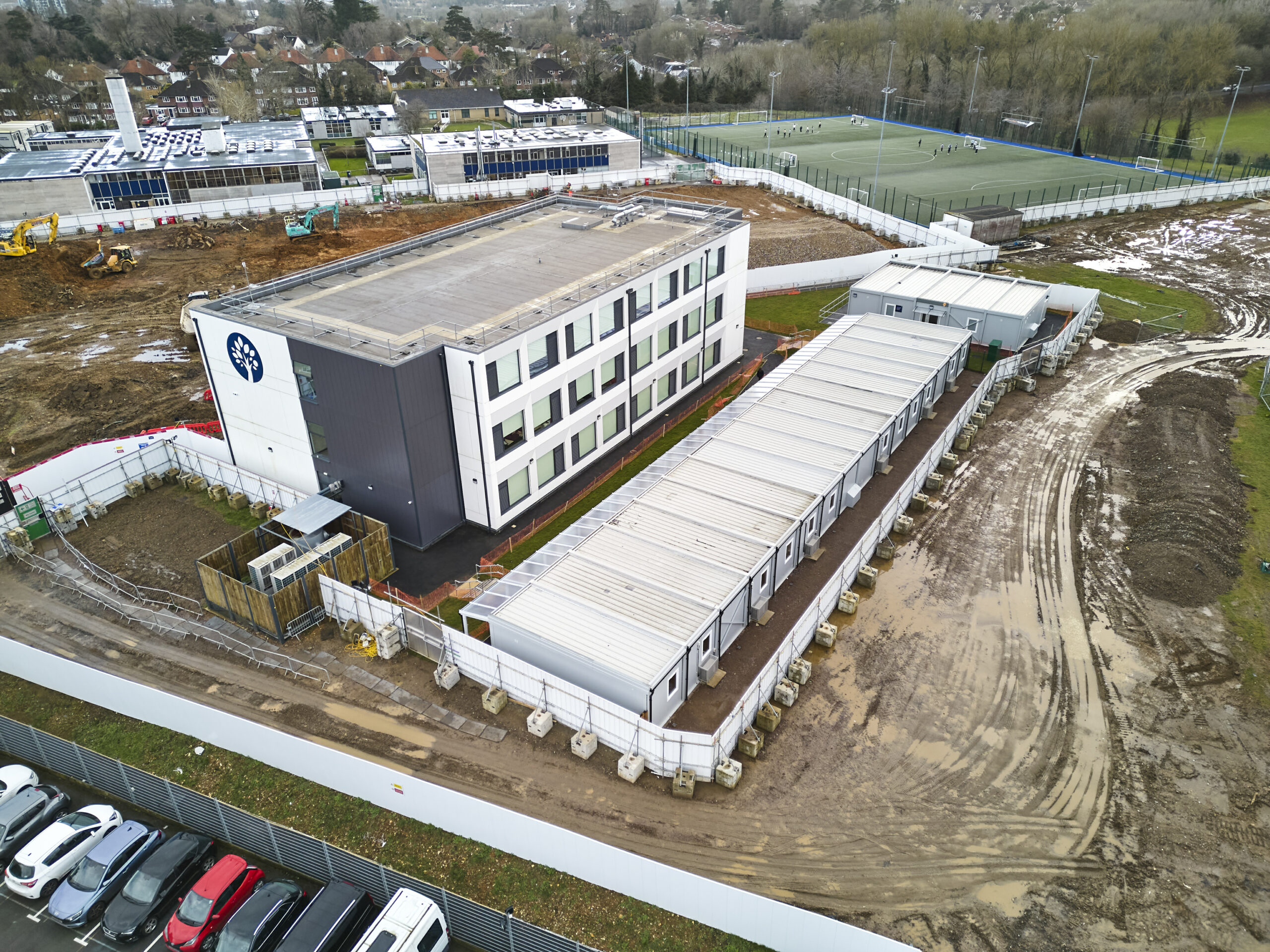client
British Land
building solution
Temporary
Size
14,500sqft
PROGRAMME
Design to handover in just 9 months
Client & Project Team Testimonials
David Walters, Programme Director, British Land
“We are using modular construction in a really different way on this campus. It is enabling our tenants to grow with us, only taking the space they need at any one time, with the knowledge that we can respond rapidly to expand the building when they need to add more space. This is achieved with the least possible disruption, and an architectural quality that enhances the surroundings enormously.”
“The first phase successfully demonstrates excellent design, a highly efficient building system, and outstanding collaboration at every stage.”
“The partnership between Premier and Hawkins\Brown continues to work exceptionally well and has definitely added value to the project. We can utilise all the benefits of offsite – speed, less impact on the environment, ease of expansion, and less disruption – whilst creating a high-quality education facility which looks fantastic.”
“The first cohort of students was able to occupy the building after just nine months, which is an impressive achievement. This project has definitely fulfilled our ambitious vision.”
Sarah Whittaker-Gilbey, Head of Facilities, Health and Safety, TEDI-London
“This is a wonderful building which has met our expectations precisely. The Premier team helped us shape this facility into exactly what we wanted. All the feedback has been so positive – from other higher education providers to property developers, fire officers, staff, students, and the local community.”
“The building flows really well and that makes way finding very easy. The design and the building fabric have been well considered and designed with disability and inclusion in mind. The ground floor café and events spaces encourage interaction and collaboration among both students and staff, and have a strong, inclusive community feel.”
“The design also reflects the innovative nature of the engineering institute and its attractive exterior has captured the attention and interest of the Southwark community. Most importantly, we all just love it!”
Andrew Tindale, Associate, Hawkins\Brown
“This scheme has been a huge success and we love the finished building. It has really brought a disused brownfield site to life and has created significant social value and a sense of community. This is a welcoming, safe, and inspiring learning environment that TEDI-London and its students can be genuinely proud of.”
“It has been a pleasure working alongside Premier and main contractor Galldris to design and deliver the building and landscape within the budget and time constraints. We believe this working relationship was critical to the project’s success.”
“Both Hawkins\Brown and Premier have also been working as industry partners to the Institute, contributing to the curriculum by setting and participating in an engineering challenge.”
BRIEF
The Engineering and Design Institute London (TEDI-London) is a new engineering higher education enterprise co-founded by three global universities – Arizona State University, King’s College London, and UNSW Sydney.
A purpose-designed facility was required by the Institute to support its vision for transformative engineering education for the next seven years until it can relocate to a permanent home within the Canada Water masterplan.
The offsite solution
British Land took the decision to use offsite construction in a different way to create a modular campus on the site of a dis-used carpark.
Premier was appointed to work with internationally renowned architects Hawkins\Brown from the pre-construction stages, to develop a framework for expansion and phasing of the new campus. The site was sub-divided into four deliverable parcels set around a modular grid using Premier’s standardised 12m by 3m modules.
This innovative approach would allow British Land and its tenants to benefit from the cost, flexibility, and programme benefits of modular construction and architectural quality to enhance the facilities, collaboration between tenants, and the locality.
The building structure comprising 43 steel-framed modules, was craned into position in just seven days and arranged over three floors.
CHALLENGES
- The modular solution needed to provide expandable space to support the growth of the university.
- The campus had to be able to accommodate other occupiers and generate social value and a strong sense of community.
- The first phase had to be completed to a fixed deadline in time for the first cohort of students and despite the challenges of the Covid-19 pandemic.
- The building had to be sustainable and re-usable to minimise impact on the environment.
- The temporary nature of the building meant it had to be cost-effective and yet deliver high-quality, practical learning.
bespoke design
The bespoke design for the first building had to meet the requirements of TEDI-London to deliver a high-quality project-based learning experience and house a variety of spaces to support students and staff.
The modules were engineered to create a large double height space for exhibitions, events, and a cafeteria.
Four ‘makerspaces’ allow for hands-on project-based learning, accommodating large-scale equipment, prototyping and 3D printing. There are also viewing galleries, a roof-top terrace, smaller conference-style meeting and teaching rooms, a student common room, and offices.
SUSTAINABILITY BENEFITS
The modular approach to construction brought a number of important environmental benefits to the project:
- As with all Premier buildings, the offsite structure was manufactured generating zero waste to landfill
- The modular components will be dismantled for sustainable re-use or recycling when the Institute relocates to its permanent home
- The lightweight nature of the steel-framed offsite system avoided the need for intrusive deep pile foundations.
Other sustainability features include:
- Low energy LED lighting with PIR sensors
- Highly efficient heating and cooling using air source heat pumps
- Mechanical heat recovery ventilation integrated with the building management system
- Siberian larch cladding can be re-used or recycled when the building is dismantled.
architectural detailing
One corner of the building was extended to three storeys to add visual interest and to create a large roof terrace for social interaction and with views over the Rotherhithe peninsula.
Services are exposed at ceiling height to allow students to understand the complexities of the building as part of their learning experience.
The timber cladding required precise setting out to meet the quality aspirations for the scheme, whilst minimising the amount of material used and referencing the history of the area – once thriving timber docks.
The spacing of the cladding varies according to the level. The lower floors are more solid to screen the structure. The upper areas use the same solution but with wider gaps to reduce the amount of material. The parapet was extended to conceal the rooftop plant and add height to the massing.
Other architectural features include full height glazed feature entrance, anthracite grey picture windows, internal glazed partitions, and a folding wall to divide the events space from the café when required.

















